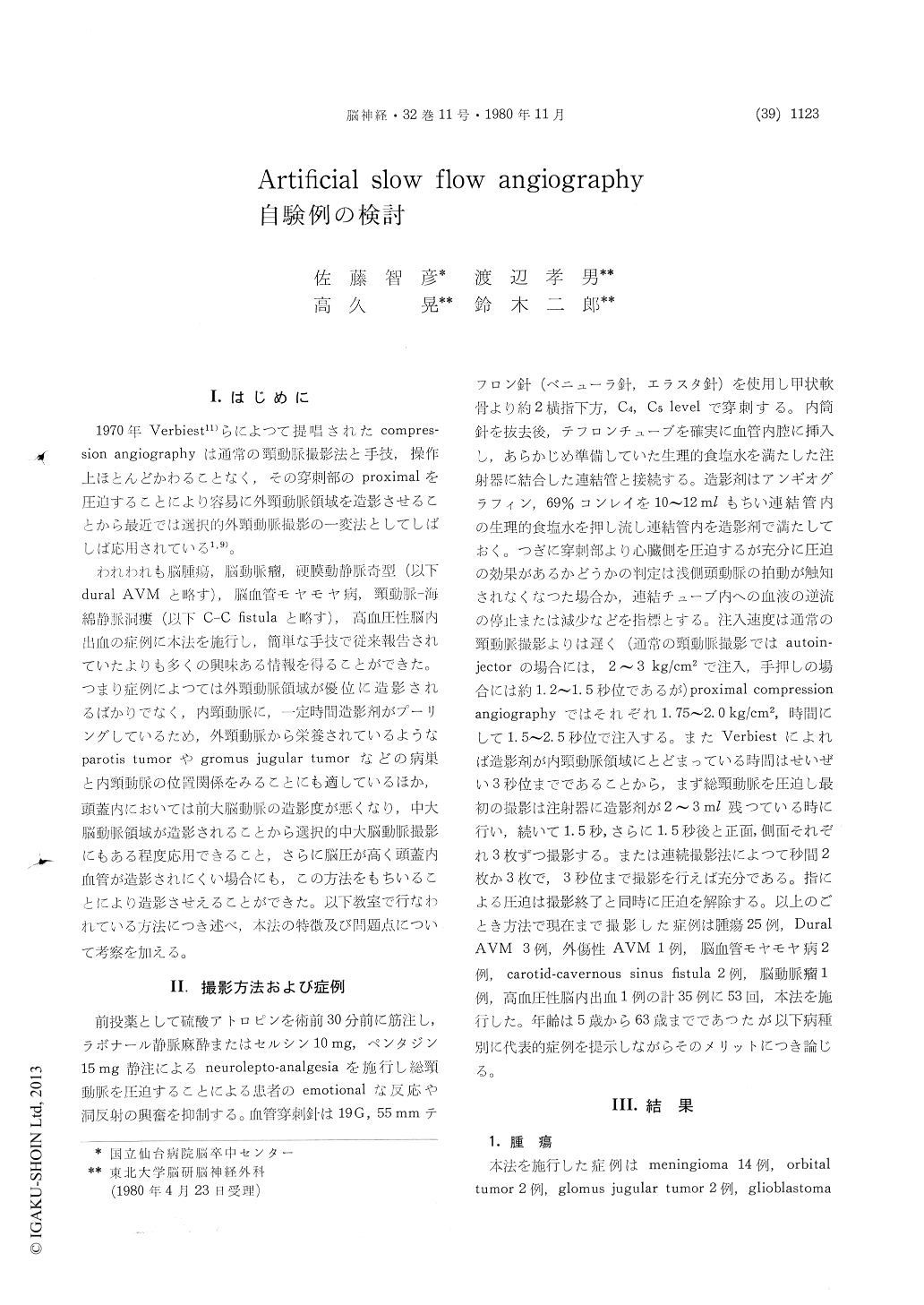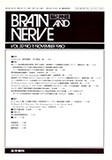Japanese
English
- 有料閲覧
- Abstract 文献概要
- 1ページ目 Look Inside
I.はじめに
1970年Verbiest11)らによつて提唱されたcompres—sion angiographyは通常の頸動脈撮影法と手技,操作上ほとんどかわることなく,その穿刺部のproximalを圧迫することにより容易に外頸動脈領域を造影させることから最近では選択的外頸動脈撮影の一変法としてしばしば応用されている1,9)。
われわれも脳腫瘍,脳動脈瘤,硬膜動静脈奇型(以下dural AVMと略す),脳血管モヤモヤ病,頸動脈—海綿静脈洞瘻(以下C-C fistulaと略す),高血圧性脳内出血の症例に本法を施行し,簡単な手技で従来報告されていたよりも多くの興味ある情報を得ることができた。つまり症例によつては外頸動脈領域が優位に造影されるばかりでなく,内頸動脈に,一定時間造影剤がプーリングしているため,外頸動脈から栄養されているようなparotis tumorやgromus jugular tumorなどの病巣と内頸動脈の位置関係をみることにも適しているほか,頭蓋内においては前大脳動脈の造影度が悪くなり,中大脳動脈領域が造影されることから選択的中大脳動脈撮影にもある程度応用できること,さらに脳圧が高く頭蓋内血管が造影されにくい場合にも,この方法をもちいることにより造影させえることができた。以下教室で行なわれている方法につき述べ,本法の特徴及び問題点について考察を加える。
The proximal compression angiography proposed by Verbiest in 1970 is almost same in technique and procedures as a usual carotid angiography. We have conducted proximal compression angio-graphy in 24 patients with brain tumors, 1 with parotis tumor, 3 with dural AVM, 1 with tra-umatic AVM, 2 with cerebrovascular moyamoya disease, 2 with carotid-cavernous sinus fistula, 1 with cerebral aneurysm and 1 with hypertensive intracerebral hemorrhage, being 35 cases in total, since 1970. Like selective external carotid angio-graphy, this proximal compression angiography revealed the feeder from the external carotid artery and tumor stain in such patients with parasagittal meningioma, sphenoidal ridge rncnin-gioms, glomus jugular tumor and parotis tumor. In case of dural AVM, the tentorial artery was selectively visualized. The lesions of carotid-cavernous sinus fistula and orbital tumor were picturized without overapping with the intracranial vessels such as the anterior and middle cerebral arteries.
From our experience, this proximal compression angiography was provided with the following characteristics: (1) the external carotid artery was selectively picturized in some patient, (2) the picture of the anterior cerebroarterial region became worse, while the middle cerebroarterial part was selectively picturized, (3) the lesion could be photographed in the internal carotid artery without overlapping with the intracranial vessels, and (4) the intracranial vesseles were distinctly photographed in those patients who could not undergo a conventional carotid angiography because of remarkably intracra-nial high pressure.

Copyright © 1980, Igaku-Shoin Ltd. All rights reserved.


